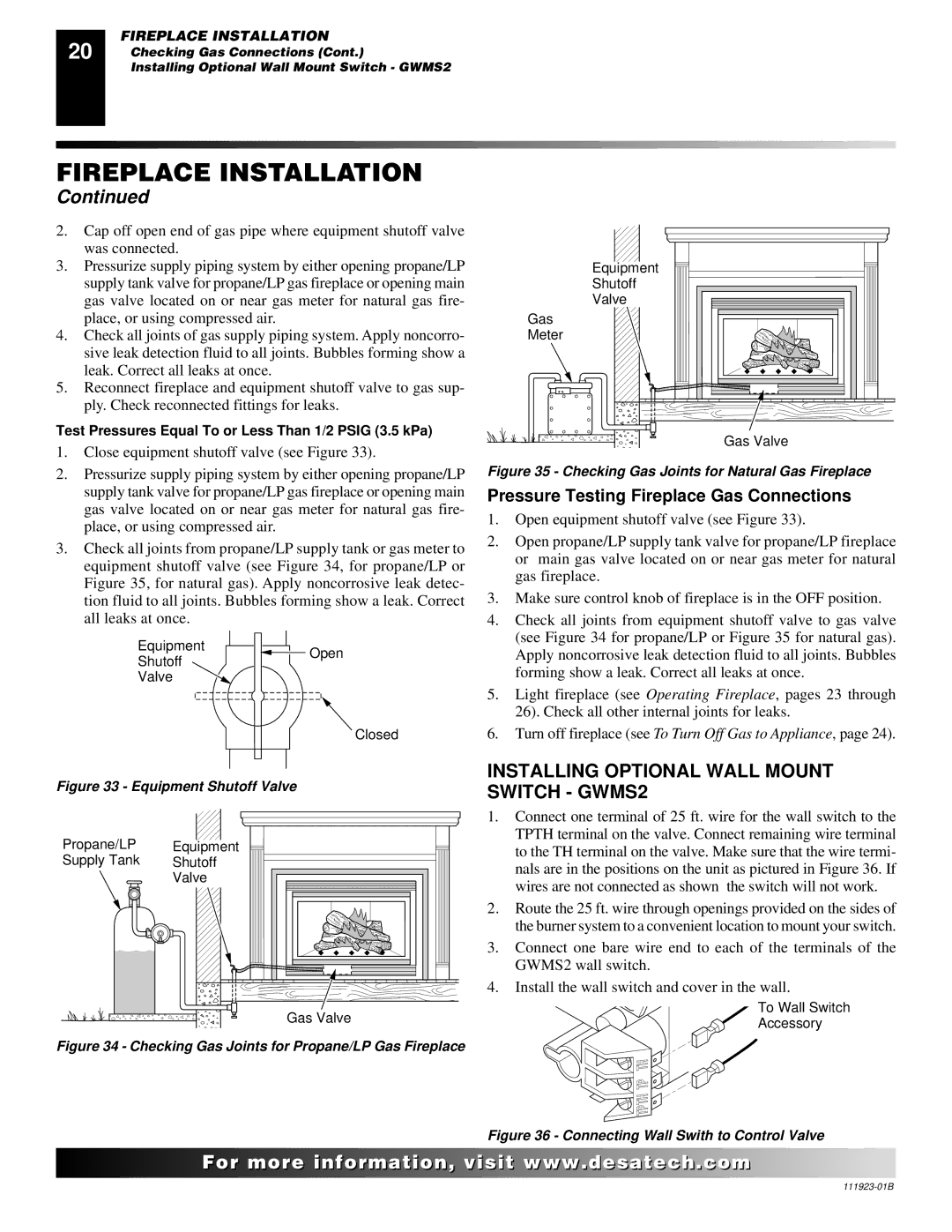(V)K36P SERIES, (V)K36N SERIES specifications
Desa (V)K36P Series and (V)K36N Series represent a significant advancement in the world of high-efficiency heating solutions, known for their innovative features and technologies that cater to varying heating needs. These series are engineered for both residential and commercial applications, offering flexibility and efficiency to meet diverse climate requirements.One of the standout features of the Desa (V)K36P and (V)K36N Series is their advanced combustion technology. Utilizing a unique burner design, these units maximize energy output while minimizing emissions. This is particularly important in today's environmentally-conscious market, where efficient energy use and reduced carbon footprints are critical.
Moreover, these series incorporate advanced heat exchanger technologies that ensure optimal thermal efficiency. This design minimizes heat loss and enhances the performance of the heating system, allowing users to enjoy comfortable indoor temperatures without excessive energy costs. The durable materials used in the construction of these heat exchangers also contribute to their longevity and reliability, making them a worthy investment.
Another notable characteristic of the Desa (V)K36P and (V)K36N Series is their user-friendly control systems. Features such as digital thermostats and programmable settings allow users to customize their heating schedules with ease, ensuring their living or working spaces remain comfortable at all times. Additionally, some models come equipped with Wi-Fi connectivity, enabling remote operation and monitoring via smartphone applications.
In terms of safety, the Desa series does not compromise. Each unit includes multiple safety features, such as overheat protection, flame failure detection, and pressure relief systems, ensuring that users can rely on their heaters with peace of mind.
Installation and maintenance are also made simpler with the Desa (V)K36P and (V)K36N Series. These models are designed for straightforward installation, minimizing disruptions during setup. They also require minimal maintenance, which reduces long-term service costs for users.
In conclusion, the Desa (V)K36P and (V)K36N Series stand out in the market due to their innovative technologies, high efficiency, user-friendly controls, and robust safety measures. These qualities make them excellent choices for anyone seeking reliable and effective heating solutions in a variety of settings.

